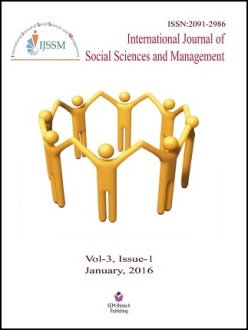Progression in Tobacco Use in India: An Application of Survival Function Analysis
DOI:
https://doi.org/10.3126/ijssm.v3i1.13809Abstract
Today India is the second largest producer of tobacco in the world and the third largest consumer. The World Health Organization predicts that tobacco deaths in India may exceed 1.5 million annually by 2020. The purpose of the present study to evaluate the pattern and correlates of tobacco use and quitting tobacco among smokers as well as users of smokeless tobacco. This study is based on the data from the Global Adult Tobacco Survey, India (2009-10). The study used the cox's proportional hazards regression model and Kaplan-meier survival analysis for computing the probability of quitting tobacco. Three level multilevel logistic regression model have been used to carry out the pattern and correlates of tobacco use. The highest percentage of young people currently using tobacco product in the North-eastern states of India. The hazard of quitting tobacco among female is 1.35 times (p<.01) higher as compared to male. The chances of quitting smokeless tobacco are less in the North-East (HR =0.484) as compared to the people from North. The odds of smoking was three times higher in 45-64 age group (OR=3.311***) compared to the age group of 15-24. Regional variation is the use of smokeless tobacco shows that results from the North-Eastern region (OR=8.748***) and Eastern region (OR= 8.184) are more likely to use smokeless tobacco in comparison to people from Northern region. This study found that the trend of use of tobacco in upward direction, whereas the probability of quitting is very low in Northeast.
Int. J. Soc. Sci. Manage. Vol-3, issue-1: 22-30
Downloads
Downloads
Published
How to Cite
Issue
Section
License
This license enables reusers to distribute, remix, adapt, and build upon the material in any medium or format for noncommercial purposes only, and only so long as attribution is given to the creator.




